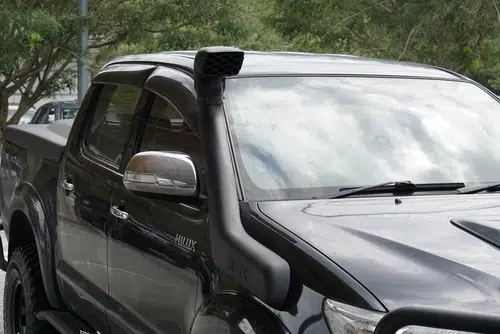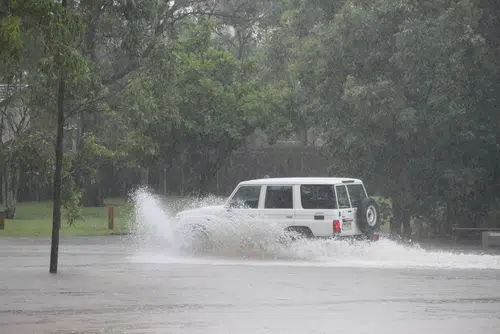Home » Blog » Car » Cars: Understanding Them » Are Cars Waterproof? Yes, No, or Somewhere in Between?
Categories
Tags
animal welfare
breed profile
buying a car
buying a pet
Car
car accessories
car care
car features
car insurance
Car safety
car sales
car service
cat
cat behaviour
cat body language
Cat Breeds
cat food
cat insurance
comprehensive car insurance
Dog
Dog Behaviour
dog body language
Dog Breeds
dog food
Dog Insurance
dog training
eco friendly cars
Kitten
New Car
pet accessories
pet activities
Pet Adoption
pet breeders
pet days of the year
pet fun stuff
Pet Health
pet insurance
pet parenting
Pet Safety
pet services
Puppy
rescue pets
road safety
road trip
safe driving
Recent Blog:
Facebook Posts
1 day ago
Growing old sometimes means we can’t take care of pets anymore. Find out some advice on what to do when this happens:![]()
![]() Senior Pet Parents – Contingency Plans for Your Pet – bit.ly/44bzwkS
... See MoreSee Less
Senior Pet Parents – Contingency Plans for Your Pet – bit.ly/44bzwkS
... See MoreSee Less
Senior Pet Parents' Contingency Plans for Pets
www.pd.com.au
Sometimes senior pet parents need more downtime. For older pet owners, this can be tricky to navigate if their dog or cat is full of beans and wants to3 days ago
Before you rev up the engine, let’s run through a checklist of things to do before starting your car. Not only do these steps ensure your safety (and that of others around you), but they also help in maintaining your vehicle's longevity.![]()
![]() Driving Tips: Your Checklist Before Starting Your Car -
... See MoreSee Less
Driving Tips: Your Checklist Before Starting Your Car -
... See MoreSee Less
Driving Tips: Your Checklist Before Starting Your Car
www.pd.com.au
Heading out for a drive? Hold up a second! Whether you're dashing off to work, running errands, or embarking on a road trip adventure, there are a few1 week ago
Are intestinal worms setting up camp in your dog’s gut without paying rent? Here’s how to spot the main culprits and get rid of them too:![]()
![]() Preventing, Identifying and Treating Intestinal Worms in Dogs - bit.ly/43YjCKu
... See MoreSee Less
Preventing, Identifying and Treating Intestinal Worms in Dogs - bit.ly/43YjCKu
... See MoreSee Less
Preventing, Identifying and Treating Intestinal Worms in Dogs
www.pd.com.au
Intestinal worms, such as roundworms in dogs are one of the least glamorous topics on the planet. These intestinal parasites that basically use our dogsYou can drive in the rain, sure…but are cars waterproof? Like, well and truly waterproof? It might seem obvious but think again!
You may have wondered whether you can safely leave your car outside if it’s tipping down. Or whether you’d be able to take it through a deep puddle if needs be.
The short answer? No, cars aren’t waterproof. But you can protect them against water damage.
What does waterproof actually mean?
For something to be waterproof, it needs to not let water in. Like your trusty rain jacket or sports watch.
While you’re (hopefully) not getting wet if you’re driving in the rain, your car isn’t technically waterproof. If you were to close everything and drop it in a lake, there’d be water entering it at a steady pace – we’ve all seen the sinking car on TV shows.
A car’s engine isn’t designed to be waterproof. That’s why if you’re driving in wet road conditions and go through deep water, your car engine is likely to cut out.
If water gets into the air intake, the engine will stop running. Then there are the electrical components which might short: think your battery, lights, the controls for your wipers, and more.
When it comes to diesel vs petrol engines (read our article on the most fuel efficient cars in Australia for more on that debate), neither one is waterproof.
However, because diesel engines don’t have spark plugs, they’re typically the ones used for serious off-roading vehicles where water crossings are likely. They’ll also often have snorkels, like the one below:

How can you make your car more waterproof?
Now you know cars aren’t waterproof. This doesn’t negate the fact that our cars sometimes have to tackle water in one way or another. Cars are of course designed in such a way that when water’s falling on them, it runs off the vehicle without running into any of the parts that would be damaged by water.
However, sometimes (especially on older cars) degradation and damage can mean your wheels aren’t as watertight as you’d like. You can take a few steps to make your car more wet-weather friendly.
Waterproofing steps for your car
First, make sure the rubber strips around your doors and windows are properly sealed.
Sometimes, the rubber can come loose or get damaged. You’ll know about it if this is the case because your car interior will usually be damp after getting caught in the rain. So not only will it not be a waterproof car…but it won’t even be particularly water resistant. (Read our article on how to get the wet smell out of your car)
You should also get into the habit of using a sealant all over your car’s painted exterior after you wash it. You may or may not want to then wax over it (never under it).This limits corrosion to the car exterior from rain and salt and can protect it against water damage. Experts say you should do this once every season.
Finally, you may want to look into a rain repellent. These are products designed specifically to keep rainwater off your windshield or get it off the windscreen quickly. If you drive in heavy rain often, it can make a world of difference. Plus, it reduces condensation and makes it easier for your wipers to do their job.

Protection for your wheels
With the downpours and floods Australians have been experiencing as of late, waterproof cars would be perfect. But on a serious note, it’s more important than ever to be conscious of protecting your car. Comprehensive car insurance is just another layer of protection – for you, financially.
Why not get a quick free quote?
Share On:




